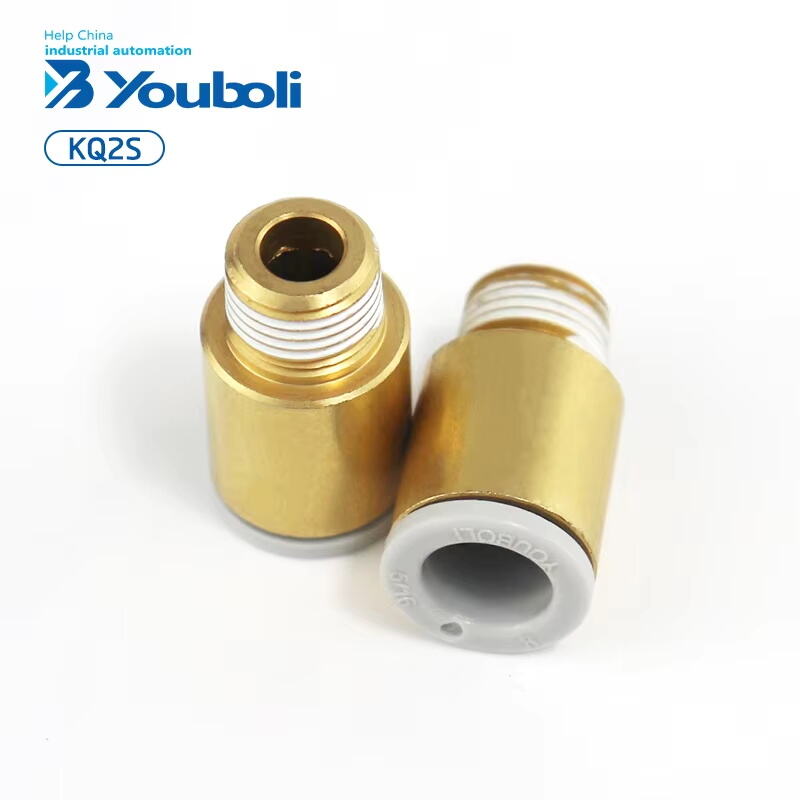The Role of Quick Connect Pneumatic Fittings in Industrial Settings
Quick connect pneumatic fittings are essential components in various industrial settings, particularly in manufacturing and assembly lines. They facilitate seamless connections within pneumatic systems, allowing for efficient transportation of air and fluids across machines and tools. By enabling swift and reliable connections, these fittings ensure that routine operations remain uninterrupted, thus contributing significantly to overall productivity.
The primary advantage of quick connect fittings lies in their ability to enhance operational efficiency. They provide a user-friendly interface for connecting hoses and tools, minimizing the time and effort required to establish a connection. This quick facilitation is crucial in high-paced environments where minimizing downtime is a priority. By ensuring a secure and leak-proof connection, these fittings maintain consistent system performance, which is vital for operations dependent on precise air pressure.
Moreover, quick connect pneumatic fittings significantly reduce downtime, a common challenge in industrial settings. Their design allows operators to easily attach and detach hoses and tools without requiring specialized tools or equipment. This feature not only speeds up routine maintenance but also enables rapid adjustments to configurations, reducing the time machines are offline and thus maximizing production uptime. By minimizing downtime, companies can achieve a smoother workflow, thereby boosting efficiency and productivity.
How Quick Connect Fittings Work: Mechanism and Ease of Use
Quick connect fittings operate through a straightforward yet effective mechanism designed for swift and secure connections. These fittings typically contain built-in valves that open when connected, allowing for immediate air or fluid transfer. The design often features a locking collar that snaps into place, ensuring the connection is both swift and reliable. This simplicity not only reduces connection errors but also minimizes the time spent on setups and disassemblies.
The ease of use of quick connect fittings is frequently lauded by operators, who highlight the ergonomic design and the rapidity with which equipment can be connected or disconnected. This ergonomic advantage is pivotal in industrial settings where time and efficiency are crucial. In environments such as factories, quick connect fittings streamline workflow by allowing seamless transitions between tasks. This efficiency enhances productivity significantly, as workers can switch tools or hoses without delays, ultimately contributing to smoother and faster operations.
Key Benefits of Quick Connect Pneumatic Fittings for Industrial Efficiency
Quick connect pneumatic fittings offer several key benefits that significantly enhance industrial efficiency.
Fast and Easy Installation
The fast installation offered by quick connect fittings dramatically reduces assembly time, which in turn, boosts production speeds. Unlike traditional fittings that require wrenches or other tools for assembly, quick connect fittings allow operators to make secure connections with a simple push-and-click mechanism. This simplicity not only saves time but also reduces the labor costs associated with installation. In a high-paced environment like an assembly line, the time saved with quick connects directly translates to increased productivity.
Leak-Proof Design
The leak-proof design of these fittings is crucial in maintaining efficiency as it prevents the loss of air pressure, which is essential for the optimal performance of pneumatic systems. By minimizing leakage, quick connect fittings help conserve energy and reduce the costs associated with wastage. This design is particularly beneficial in systems where maintaining pressure integrity is paramount, as even minor leaks can lead to substantial losses over time.
Improved Safety
Quick connect fittings also enhance workplace safety by minimizing the risk of accidents that are often associated with manual connections. Traditional threading methods require force and can lead to physical strain or injury. Quick connects eliminate these risks by offering a tool-free method of operation, greatly reducing the potential for mishaps and ensuring a safer working environment.
Versatility
The versatility of quick connect fittings makes them indispensable across various industries, from automotive to pharmaceuticals and textiles. Their ability to adapt to different systems and handle a range of pressures and fluids enables them to be integrated into diverse applications seamlessly. Whether in a pneumatic assembly line or a chemical transfer system, quick connect fittings provide reliable performance and flexibility, thereby enhancing workflow efficiency across sectors.
Common Types of Quick Connect Fittings
Quick connect fittings are essential components in pneumatic systems, enhancing efficiency and ease of operation across industries. One popular type is the Push-to-Connect fitting. These fittings are esteemed for their simple, tool-free installation, making them ideal for air lines and pneumatic tools. The design allows users to easily insert or remove tubes, which facilitates quick changes and minimizes downtime in industrial processes.
Threaded fittings are renowned for their robustness, particularly in high-pressure environments where secure connections are critical. These fittings are screwed into place, providing reliable connections that withstand the rigors of intense applications. Industries that prioritize safety and efficiency often opt for threaded fittings to ensure airtight seals and prevent disconnections under load.
Barbed fittings serve a unique role in systems requiring flexibility, given their design to work with flexible hoses. The barbed end of these fittings grips the inside of a hose to create a tight seal, effectively preventing leaks, which is crucial in maintaining system integrity. This type of fitting is especially beneficial in applications where hoses might experience movement or vibration.
Compression fittings, on the other hand, are integral in securing tubing connections securely, especially in high-stress applications. These fittings use a compressive force to join components, which results in durable and leak-resistant connections. This makes them advantageous in environments where the tubing might be subjected to varying temperatures and pressures, providing consistent performance.
Best Practices for Selecting and Maintaining Fittings
Selecting the right fittings for your pneumatic systems is crucial for optimal performance and safety. Begin by assessing your system requirements, including the pressure ratings, material compatibility, and the type of application you are working with. For instance, ensuring material compatibility can prevent reactions that might compromise the integrity of the fittings. Moreover, pressure ratings help you choose fittings that can withstand operational stress, thus avoiding any potential failures.
Equally important is the routine maintenance of these fittings to ensure long-term performance. Regularly clean and inspect fittings for any signs of wear or damage, as these can lead to leaks or system inefficiencies. By maintaining a proactive approach, you can extend the lifespan of your fittings and ensure the seamless operation of your pneumatic systems.
FAQ
What are quick connect pneumatic fittings?
Quick connect pneumatic fittings are components used to easily connect and disconnect hoses and equipment in pneumatic systems, facilitating efficient air and fluid transfer.
How do quick connect fittings reduce downtime?
These fittings allow for rapid attachment and detachment without tools, speeding up routine maintenance and adjustments, thus minimizing machine downtime.
Are quick connect fittings safe compared to traditional methods?
Yes, they improve safety by minimizing physical strain and reducing the risk of accidents associated with manual connections and traditional threading methods.
Can quick connect fittings be used in any industrial application?
Yes, their versatility allows them to be used across various industries, including automotive, pharmaceuticals, and textiles, adapting to different systems and pressures.

